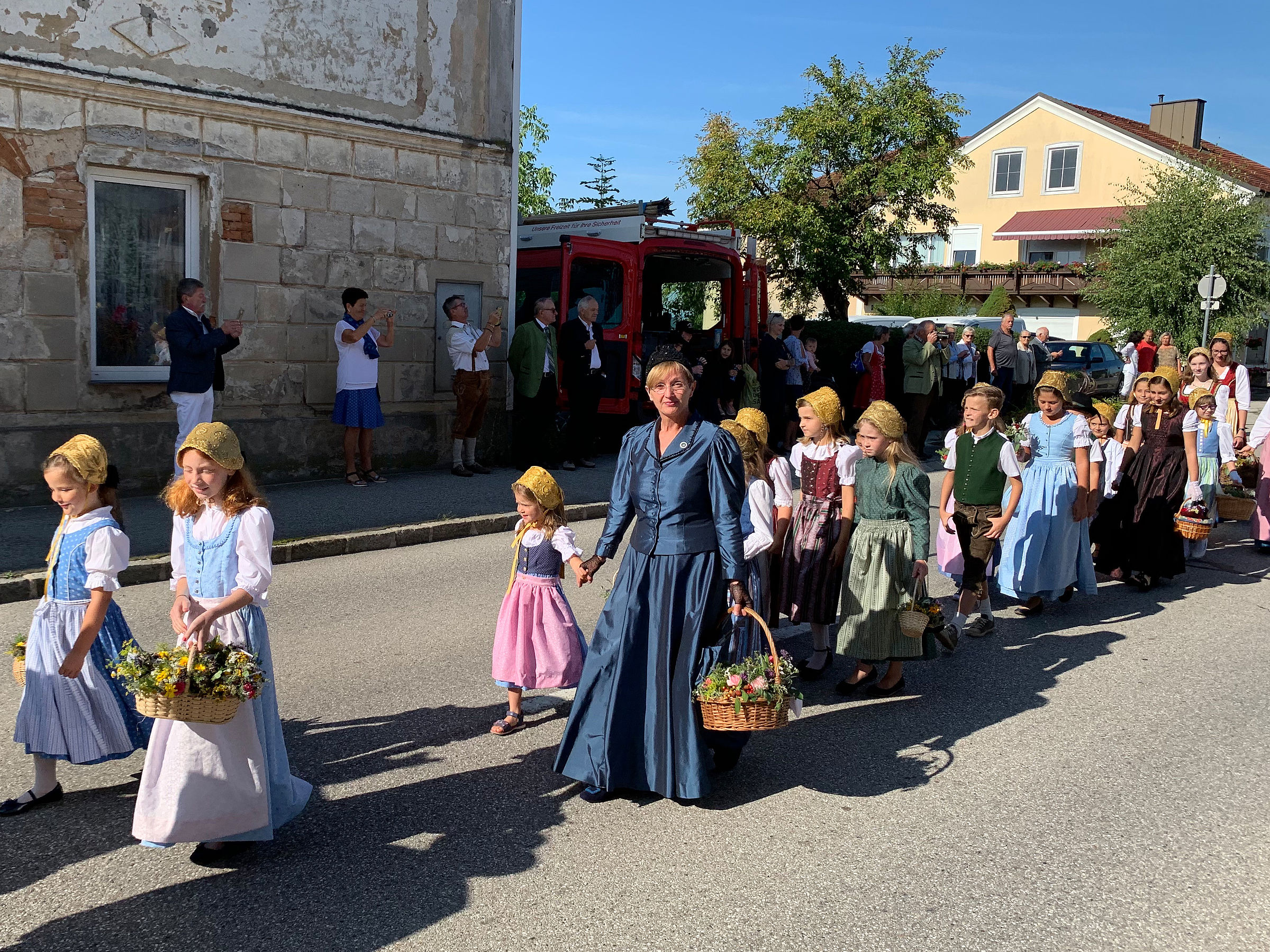PILGRIMAGE OF THE MOSTVIERTEL’S GOLDEN BONNET AND TRADITIONAL COSTUME GROUPS
Social practices in Lower Austria, inscribed 2022
The annual pilgrimage of the Mostviertel’s golden bonnet and traditional costume groups has taken place on 15 August for more than 60 years. The highlight is the collective entry of all 1,000 pilgrims into the church, followed by a festive service and the blessing of the herbs and the pilgrimage candle. Each year, this event takes place in a different parish, or at one of the Mostviertel’s 54 pilgrimage sites, and is both a spiritual and a social occasion.
Since 1957, the pilgrimage of the Mostviertel’s golden bonnet and traditional costume associations, the so-called golden bonnet pilgrimage, has taken place every year in alternating parts of the region. It originated to give thanks for the end of the Second World War and due to the desire for joint activities amongst the various golden bonnet and traditional costume groups. The request for a peaceful future, families’ well-being, and career are now also paramount in addition to this gratitude.
In preparation for the annual pilgrimage, four joint meetings take place throughout the year, each on a Saturday afternoon. At these meetings, the chairwomen discuss the organisational necessities and priorities regarding the coming pilgrimage, but also dedicate their time to technical information and discussions about customs, traditional costumes, and various handicraft techniques. Most of the participants are females from the approximately 25 golden bonnet and traditional costume groups in the Mostviertel. These traditional costume associations also include the participating pearl bonnet, headscarf, and Hammerherren groups.
On the day of the pilgrimage, the High Women's Day, all participants walk the last part of the journey to church together and enter in procession. The marching band usually leads this procession. During the festive service, Marian hymns such as “Bless you, Mary” are sung by everyone and the pilgrimage candle and bunches of herbs are blessed at the end. Local cultural associations, such as bands, choirs, folk-dance groups, and theatre ensembles accompany the convivial gathering after the service. The golden and pearl bonnets wear their traditional costumes for the pilgrimage and the Hammerherren also turn out in optically corresponding frock coats and hats. The golden bonnet and traditional costume groups often have skilled embroiderers within their own ranks. Those craft skills associated with the production of the costumes, such as tailoring, crocheting, and piping, are taught at regular gatherings, as well as in workshops and courses. Participation in the study of the craft as well as in the pilgrimage itself is now open to anyone interested. The groups and associations jointly plan the programme related to the pilgrimage for the coming years and are also committed to social cohesion in their communities of origin throughout the year.
Contact
Daniela Heinzl
Holzleiten 123
3350 Haag
daniela@heinzl.cc
Downloads
- Expertise Niemeczek (in German only) 158 KB (pdf)
- Expertise Wolf (in German only) 71 KB (pdf)
- Application form (in German only) 2 MB (pdf)


![[Translate to EN:] © J. Ségur/ZED, with the permission of UNESCO](/fileadmin/_processed_/d/b/csm_Convention-2003-IKE_0832a6a47d.jpg)
![[Translate to EN:] © ÖUK](/fileadmin/_processed_/3/9/csm_P1011318_7eac86402f.jpg)

![[Translate to EN:] © Weitblickfilm](/fileadmin/_processed_/9/8/csm_Workshop_17_2dee1e1fd8.jpg)